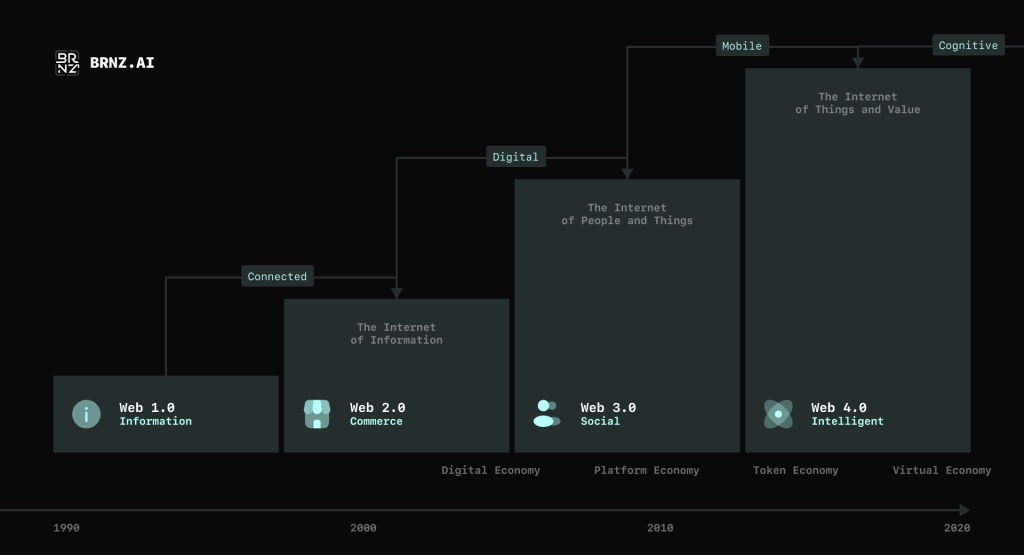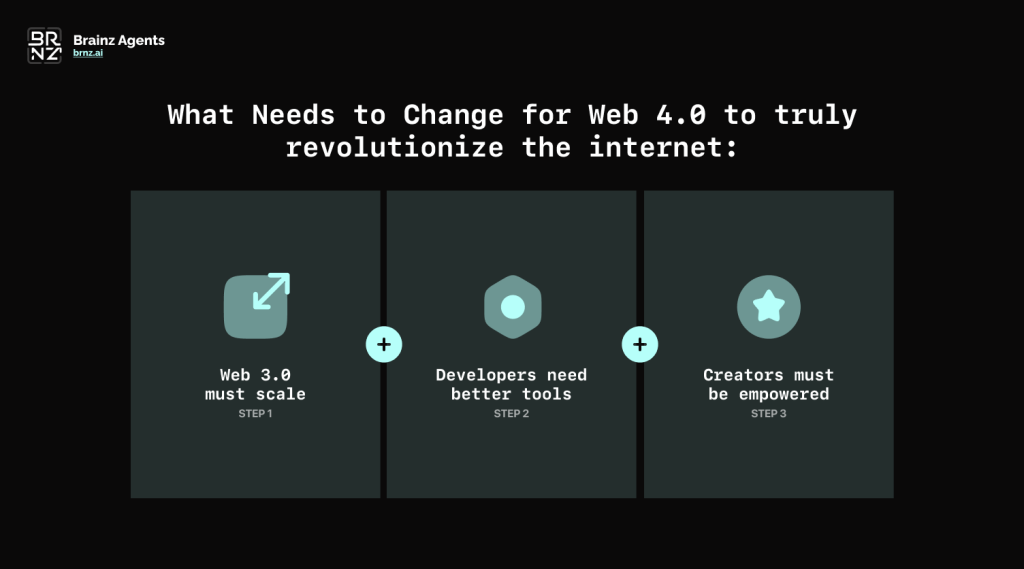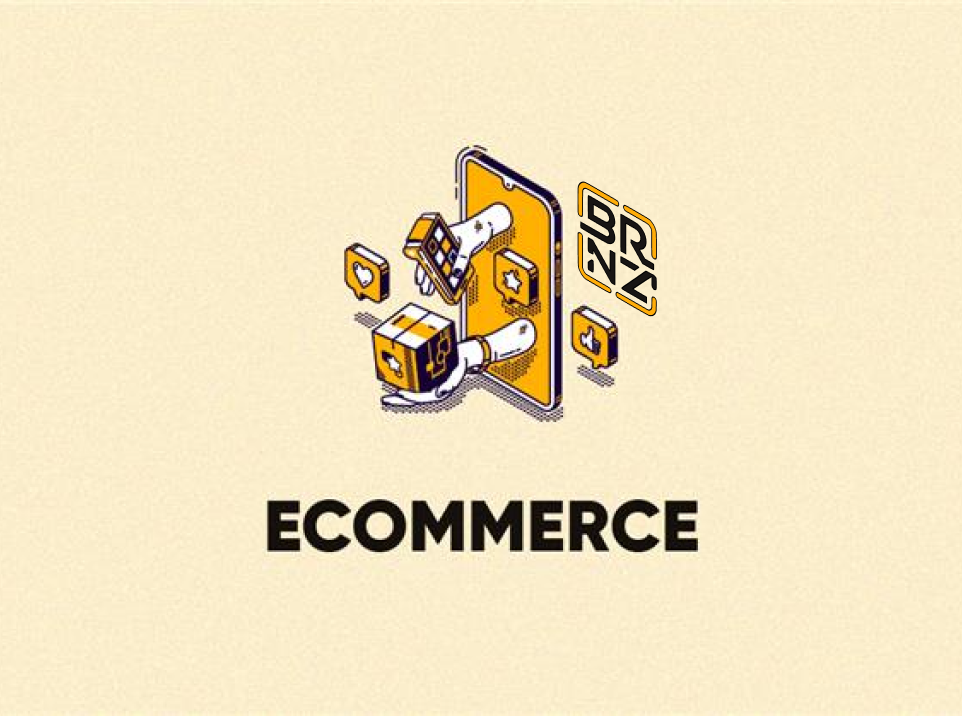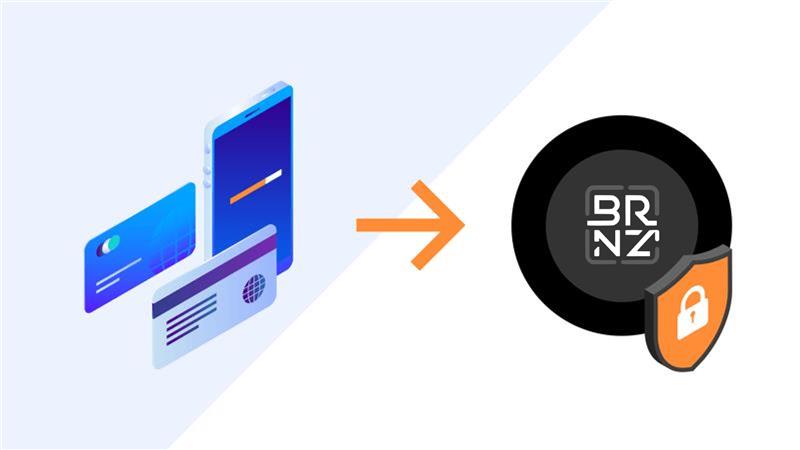Imagine an internet where your personal AI assistant handles your tasks with precision: sorting emails, managing investments, and even booking flights—seamlessly and effortlessly. No popups, no intrusive ads, no data-hungry corporations spying on your every move. Sounds like a dream, right?
Welcome to the vision of Web 4.0, the next frontier where AI meets blockchain, decentralization collides with personalization, and inconvenience becomes a thing of the past. But here’s the catch—are we jumping the gun?
A Journey Through the Web Ages
In the early 90s, Web 1.0 was the “read-only” internet: static websites, basic information, and no interaction. It was simple but groundbreaking. Fast forward to the 2000s, and Web 2.0 transformed everything. Social media, user-generated content, and interactive platforms took over—but at a cost. We traded privacy for convenience, handing over control of our lives to data-harvesting giants like Facebook and Google.
Then came the dream of Web 3.0: a decentralized utopia where users own their data, interact peer-to-peer, and finally escape the chokehold of big tech. But let’s be honest—Web 3.0 is struggling to survive.

Why? Scalability issues, skyrocketing transaction fees, and a focus on speculative meme coins rather than real-world solutions have left it limping. The promise of decentralized, peer-to-peer interactions has been overshadowed by unreliable blockchains and broken user experiences.
Is Web 4.0 a Pipe Dream?
The idea of Web 4.0—a seamless, AI-driven internet—is undeniably seductive. But here’s the truth: Web 4.0 can’t succeed until Web 3.0 delivers.
If the foundation of blockchain infrastructure remains weak, Web 4.0 will be just another evolution of Web 2.0, where AI agents owned by Meta, Google, and Apple collect even more of your data and entrench their dominance. Imagine AI tools that predict your every move, not to serve you, but to serve up hyper-targeted ads and tighten their grip on your life.
Without scalable and reliable blockchain technology, Web 4.0 won’t deliver freedom—it’ll deliver a better-looking digital cage.
What Needs to Change?
For Web 4.0 to truly revolutionize the internet:
- Web 3.0 must scale. We need blockchains capable of processing millions of transactions per second with tiny fees and near-perfect reliability.
- Developers need better tools. Platforms like sCrypt are making it easier to build real-world Web 3.0 applications.
- Creators must be empowered. Tools like LaMint and Gibeo are paving the way for micropayments and new monetization models, giving creators freedom from platform gatekeepers.

The Sobering Choice
We’re at a crossroads. Either we unite to build a scalable, decentralized Web 3.0 that paves the way for a true Web 4.0 revolution—or we continue to bicker over meme coins and let the big tech giants entrench their monopoly, turning Web 4.0 into their playground.
Web 4.0 could be the most transformative version of the internet yet. But without a solid foundation, it risks becoming just another marketing buzzword, wrapping the same old exploitation in shiny new packaging.
So, here’s the question: Do we seize this moment to build something truly revolutionary, or do we watch as the masters of Web 2.0 tighten their grip even further?
Let’s hear your thoughts—what does Web 4.0 mean to you? And how do we make sure it’s built on the right foundations?



